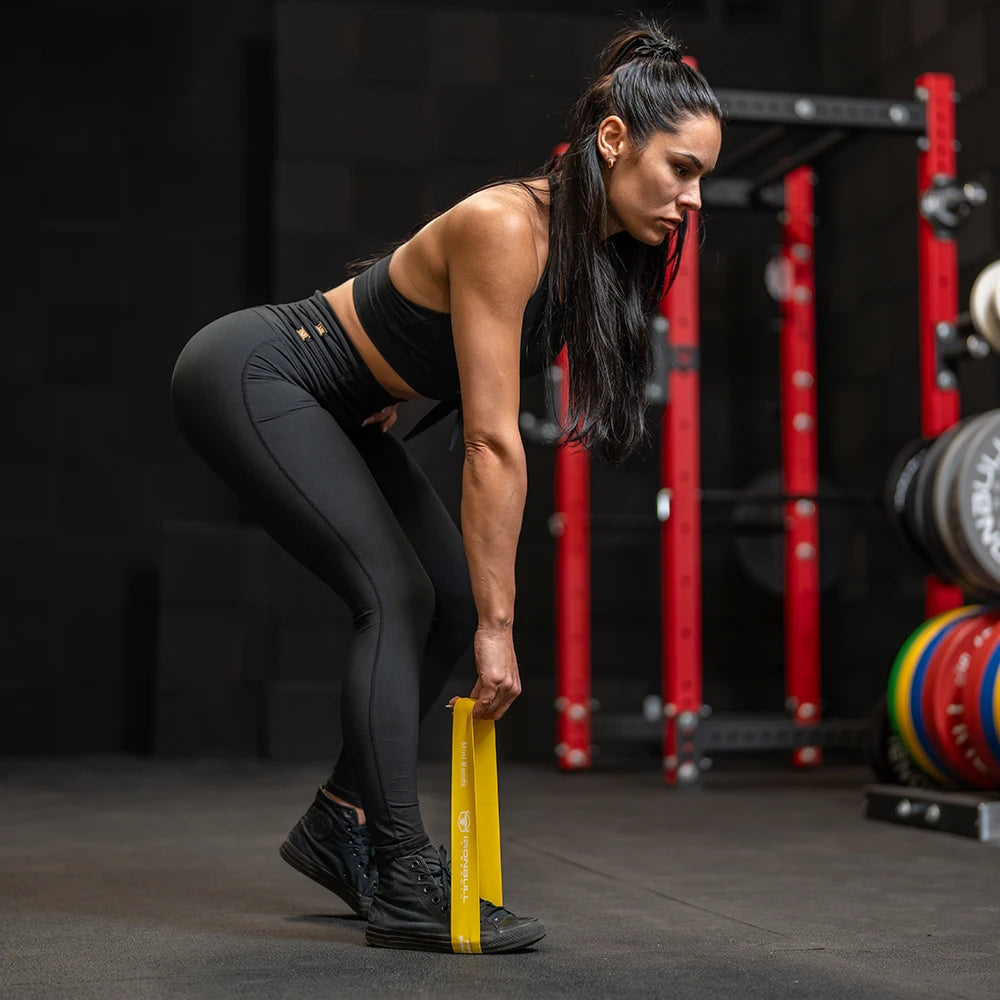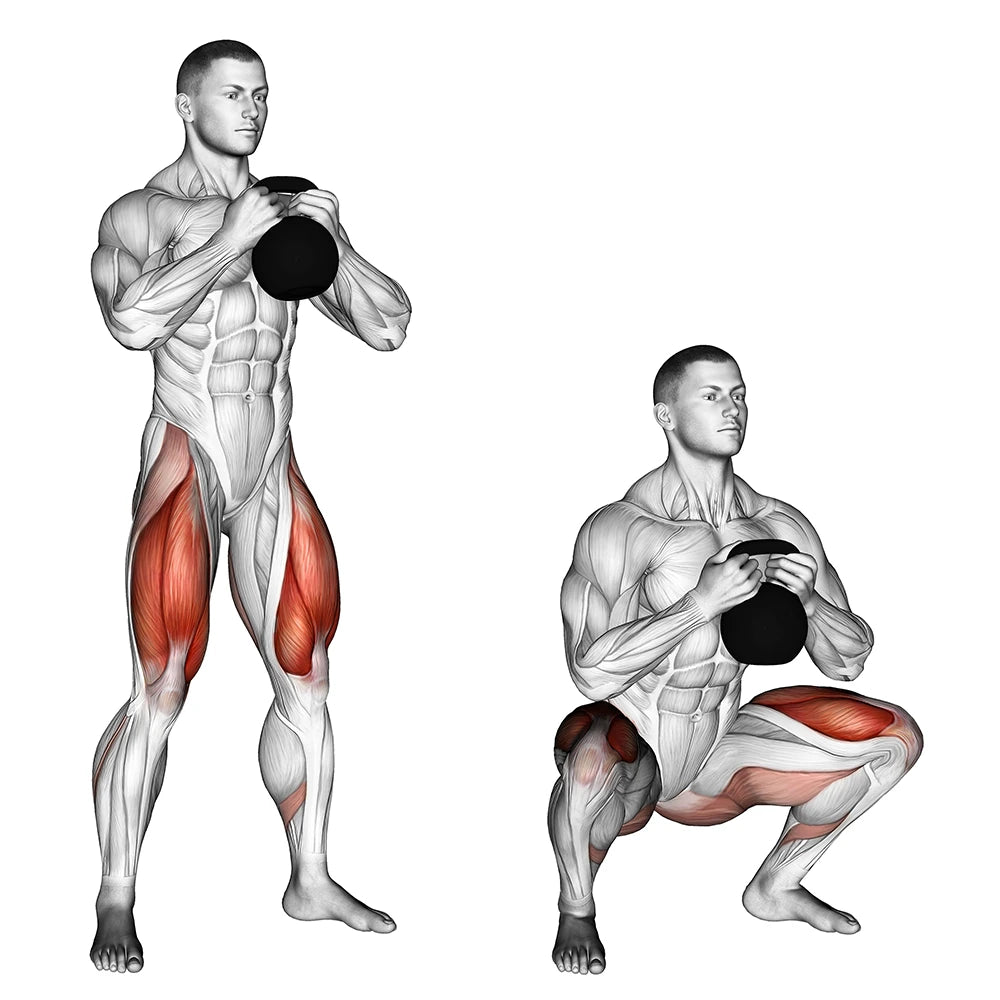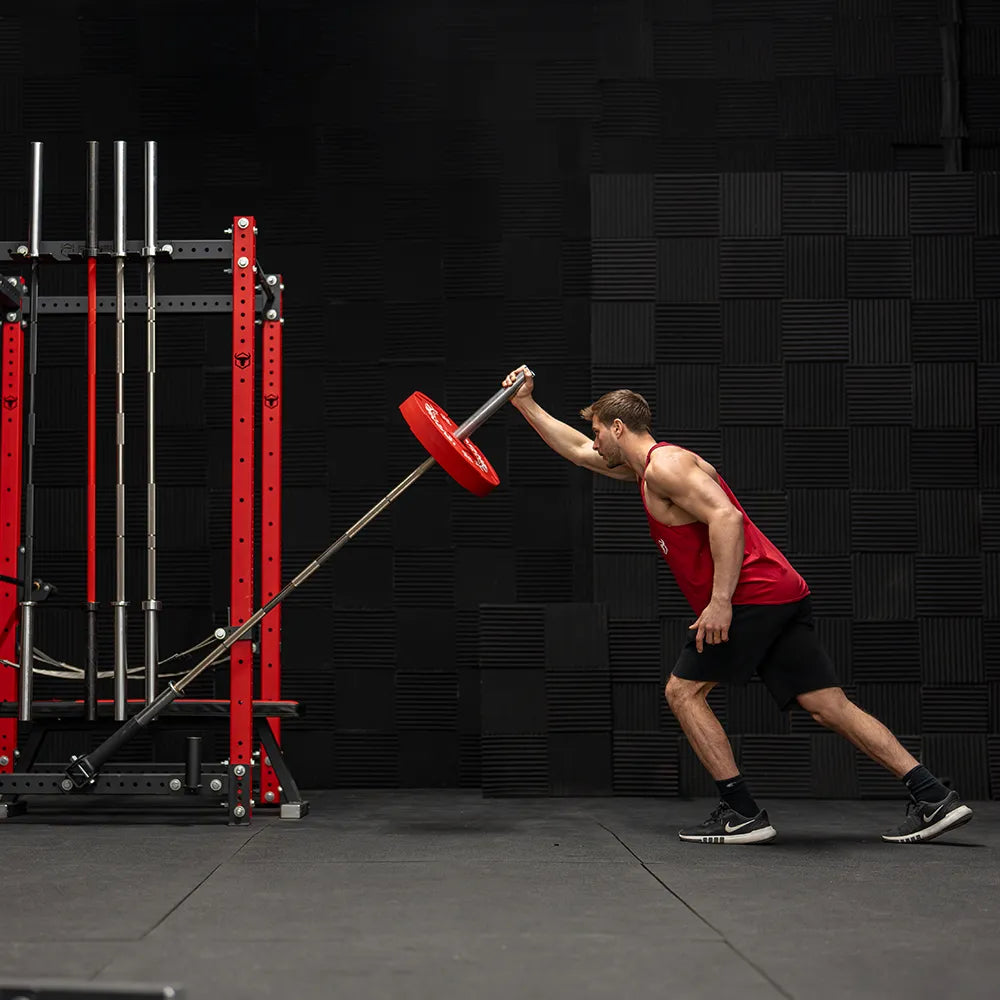Comment faire des RDL en position B


Lorsqu'il s'agit d'affiner votre routine de jambes, le soulevé de terre roumain B Stance (RDL) offre une touche unique.
Contrairement au RDL traditionnel, cette variante se concentre sur la force unilatérale, ajoutant un nouveau défi à votre entraînement.
L’intégrer à votre routine peut aider à corriger les déséquilibres musculaires et fournir un stimulus différent pour la croissance, en particulier pour vos fessiers, vos ischio-jambiers et le bas du dos.
Comprendre le soulevé de terre roumain en position B
Qu'est-ce qu'un soulevé de terre roumain ? Le soulevé de terre roumain en position B est un exercice à une jambe avec un peu plus de stabilité. effectuez -le avec un pied légèrement derrière l'autre, les orteils de votre pied arrière touchant à peine le sol.
Cette configuration vous permet de cibler une jambe à la fois tout en conservant un meilleur équilibre par rapport à un RDL à une jambe complet.
Si vous êtes nouveau dans le domaine des RDL, vous voudrez peut-être d'abord lire notre article « Top 6 des avantages du soulevé de terre pour une force améliorée ? » pour bien comprendre la technique fondamentale.
Principes de base de la position B
Qu'est-ce que la position B ? La position B implique une posture décalée, un pied étant légèrement en retrait de l'autre.
Cela crée une situation où la jambe avant supporte la majeure partie de la charge, l'isolant efficacement pendant le levage. La jambe arrière agit comme un stabilisateur, assurant l'équilibre tout en permettant une concentration unilatérale significative.
Qu'est-ce que le soulevé de terre roumain en position B ?
L'association de la posture B et du RDL traditionnel cible les fessiers, les ischio-jambiers et le bas du dos, ce qui en fait un excellent choix pour ceux qui cherchent à améliorer leur force et à corriger leurs déséquilibres musculaires. La nature unilatérale de l'exercice contribue à renforcer le bas du corps tout en améliorant l'équilibre et la mobilité.
Muscles raréfiés par les RDL en position B
Muscles principaux : L' accent est mis principalement sur les fessiers, les ischio-jambiers et les muscles érecteurs du rachis. Ces muscles sont sollicités plus intensément grâce à la position unilatérale.
Muscles secondaires : cet exercice sollicite également les muscles secondaires, comme le haut du dos et les bras. La posture B modifie légèrement la charge musculaire, offrant une stimulation unique qui peut aider à franchir les paliers.
Avantages du soulevé de terre roumain en position B
Améliorer la force du bas du corps Le B Stance RDL est efficace car il combine les avantages de l'entraînement unilatéral avec une base plus stable, conduisant à une meilleure force globale et au développement musculaire de vos jambes.
Améliorer l'équilibre et la mobilité. La posture B sollicite le tronc et stabilise les muscles, améliorant ainsi l'équilibre et la coordination. Cela peut se traduire par de meilleures performances dans d'autres exercices et activités quotidiennes.
Traiter les déséquilibres musculaires En ciblant une jambe à la fois, vous pouvez corriger les déséquilibres musculaires qui pourraient vous freiner. Cela peut conduire à un développement musculaire plus symétrique.
Un tremplin vers le soulevé de terre à une jambe
Si vous souhaitez progresser vers le soulevé de terre sur une jambe, le B Stance RDL est un tremplin idéal. Il offre un environnement plus stable pour développer la force et l'équilibre nécessaires.
Guide étape par étape pour effectuer des RDL en position B
Avant de commencer, il est essentiel de bien positionner votre corps. Commencez avec un poids léger pour vous entraîner et trouver votre équilibre. À mesure que vous vous sentez plus à l'aise, vous pouvez augmenter progressivement le poids. Pensez à utiliser une barre adaptée avec un moletage adapté, des plaques de protection pour plus de sécurité et des bras de soutien.
Pour une compréhension plus approfondie de la façon de sélectionner le bon poids, consultez notre article « Combien dois-je soulever de terre ? ».
Comment effectuer un soulevé de terre roumain en position B
Exécution du mouvement : Tenez les haltères ou la barre en prise neutre, les épaules en arrière et la poitrine bombée. Assurez-vous d'avoir l' équipement de sécurité adéquat, comme des bras de protection si vous utilisez un rack à squat .
En vous penchant au niveau des hanches, concentrez-vous sur la poussée vers l'arrière plutôt que sur la flexion de la taille. Abaissez les poids jusqu'à ressentir un étirement des ischio-jambiers, en gardant le dos droit et la ceinture abdominale contractée.
Votre genou avant doit être légèrement plié tandis que votre jambe arrière reste presque droite.
En revenant à la position de départ, concentrez-vous sur la poussée du talon avant et contractez les fessiers. Pensez à utiliser un équipement de soutien comme un levier de ceinture pour renforcer la stabilité du bas du dos et des sangles de soulevé de terre si votre force de préhension a besoin d'être renforcée.
Erreurs courantes lors du soulevé de terre
Erreurs courantes à éviter en position B. Comme tout exercice, la position B comporte son lot d'embûches. L'une des erreurs courantes est de ne pas maintenir une colonne vertébrale neutre tout au long du mouvement.
Arrondir le dos peut entraîner des blessures, alors assurez-vous de garder la poitrine haute et les épaules en arrière.
Une autre erreur consiste à transférer trop de poids sur le pied arrière. N'oubliez pas que le pied arrière sert uniquement à l'équilibre ; gardez donc la majeure partie de votre poids sur la jambe avant. Pour plus d'informations sur les pièges courants à éviter, consultez notre article « 10 erreurs de soulevé de terre à éviter absolument » .
Intégrer les RDL en position B à votre entraînement
Séries et répétitions recommandées Pour tirer le meilleur parti de vos RDL B Stance, pensez à les intégrer à votre routine une ou deux fois par semaine.
Vous pouvez les associer à d'autres exercices du bas du corps, comme les squats et les fentes, pour un entraînement complet. Les débutants peuvent privilégier des poids légers avec un nombre de répétitions plus élevé, tandis que les haltérophiles expérimentés peuvent privilégier des répétitions plus faibles avec des poids plus lourds.
Conseils de progression : À mesure que vous vous familiarisez avec la posture B RDL, augmentez progressivement le poids ou essayez différentes variantes. Vous pouvez également expérimenter différentes plages de répétitions et différents tempos pour stimuler vos muscles.
Exercices complémentaires
Complétez le RDL en posture B avec d'autres exercices ciblant des groupes musculaires similaires, comme les poussées de hanches, les fentes et les RDL traditionnels. Ces exercices constituent un entraînement complet du bas du corps et vous aident à atteindre vos objectifs de force.
Améliorez votre routine de gym à domicile !
L’intégration du B Stance RDL dans votre routine peut vous aider à développer des jambes plus fortes et plus équilibrées.
En vous concentrant sur la force unilatérale, vous pouvez corriger les déséquilibres musculaires et améliorer vos performances globales.
Alors, la prochaine fois que vous cherchez à changer les choses le jour des jambes, essayez le B Stance RDL.


